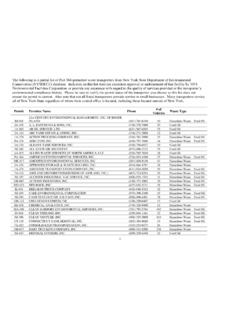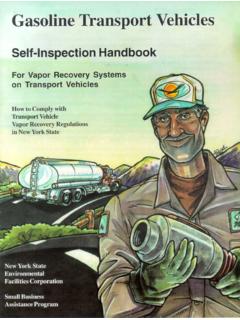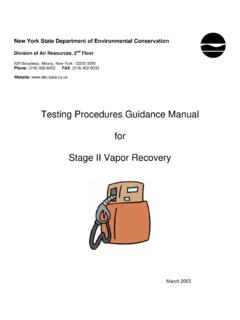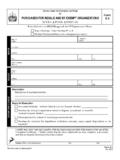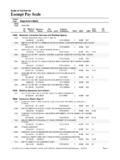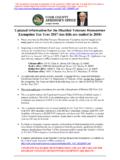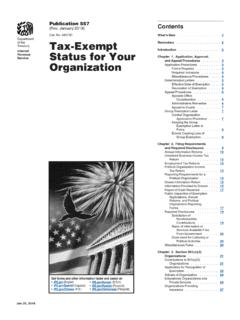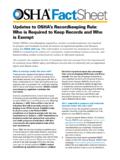Transcription of Hazardous Waste: Conditionally Exempt Small Quantity ...
1 Hazardous Waste: Guidelines for a Conditionally Exempt Small Quantity Generator (CESQG) September 2008 Is your business a CESQG? To be considered a CESQG you may only generate less than 220 pounds (about gallons) of Hazardous waste and less than pounds of acutely Hazardous waste per month. The EPA identifies wastes using a series of unique waste codes. Under this system materials assigned P-listed codes and certain dioxin codes (F020-F023 and F026-F028) are considered to be acute wastes, whereas the remaining waste codes are non-acute. Also, you may only store less than 2,200 pounds (about 275 gallons) of Hazardous waste and less than pounds of acutely Hazardous waste on-site at any time. Exceeding any of these thresholds will push you into a larger category of waste generator status and require you to follow additional requirements. It is strongly recommended that you keep detailed records to ensure that you remain under these limits.
2 Do I need an EPA Identification Number to store/transport my waste? This is a unique number assigned to waste generators by the EPA. If you are a CESQG you are not required to obtain one. Is there a storage time limit for wastes? There is no time limit for Hazardous waste storage as a CESQG; however the storage of universal waste (lamps, mercury thermostats, batteries, etc.) is limited to one year from the date of accumulation. How do I store Hazardous Waste? Containers must remain closed, be structurally sound, be compatible with their contents and lack evidence of leakage, spillage or damage. The container should be clearly labeled to easily identify its contents. Full containers should be stored in a separate area, labeled Hazardous Waste Storage Area, where they will be protected from damage. Does a CESQG need to track wastes with a Hazardous Waste Manifest? A manifest is a multi-copy shipping document; it is not required of a CESQG.
3 (over) How do I transport my Hazardous Waste? As a CESQG you have two options: (1) You may legally haul less than 220 pounds of waste to an approved facility located within New York State yourself, or (2) your business can use a NYS DEC permitted hauler. (Be aware that all NYS/US Department of Transportation (DOT) requirements regarding Hazardous waste transporting should be followed.) Where do I bring or send my Hazardous Waste? You must ensure that your waste is transported to one of the following facilities: (1) State or federally regulated Hazardous waste management treatment, storage or disposal facility. (2) Facility permitted by NYS to manage municipal or industrial solid waste and authorized to receive CESQG Hazardous waste or (3) A facility that uses, reuses, or legitimately recycles the waste. (4) Permitted household Hazardous waste collection facility that accepts CESQG waste.
4 CESQG Best Management Practices 9 Keep detailed records for all waste transactions. 9 Open, handle and store Hazardous waste containers carefully to prevent them from rupturing and to prevent the waste from leaking or spilling. 9 Store only one type of Hazardous waste in each container. Mixing wastes can cause dangerous reactions and makes waste disposal more difficult. 9 Lock your storage area to keep it secure. 9 Post list of emergency and spill response phone numbers next to the phone. 9 Use waste minimization practices and non- Hazardous material substitutions when available. No matter what waste you dispose of, it is your responsibility to determine the type and Quantity of Hazardous waste you generate and to properly manage it. If you need help identifying your wastes, contact our office for additional assistance. The information in this fact sheet is intended for general reference only; it is not a full and complete statement of the technical or legal requirements associated with the regulation.
5 Helping New York s Small Businesses understand and comply with environmental regulations. Small Business Environmental Assistance Program NYS ENVIRONMENTAL FACILITIES CORPORATION 625 Broadway, Albany, NY 12207-2997 1-800-780-7227 / 518-402-7462 David A. Paterson, Governor Matthew J. Millea, Acting President
